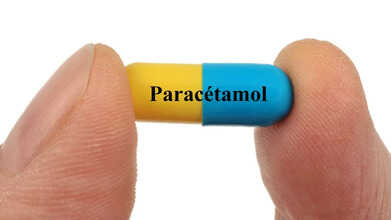- Health Conditions A-Z
- Health & Wellness
- Nutrition
- Fitness
- Health News
- Ayurveda
- Videos
- Medicine A-Z
- Parenting
- Web Stories
What Is The 'Asian Glow'? Is It Just Body's Reaction To Alcohol Or Something More Dangerous?

Credits: Canva
Commonly nicknamed the “Asian glow” or “Asian flush,” alcohol flush reaction is a physical response to drinking alcohol seen predominantly in people of East Asian descent.
This condition is marked by a reddening of the face, increased heart rate, and sometimes nausea or headaches shortly after consuming alcohol.
About 560 million people worldwide, which makes it roughly 8% of the global population, carry a genetic mutation called ALDH2*2 that causes this reaction. An estimated 45% of East Asians experience flushing when they drink, and many use antihistamines to mask the symptoms.
But researchers warn that these visible reactions are more than just a cosmetic issue, they’re a red flag indicating a heightened vulnerability to serious diseases. We spoke to Dr Gaurav Mehta, Consultant, Gastroenterology/Hepatology and Transplant Hepatology, Kokilaben Dhirubhai Ambani Hospital, Mumbai, who explains that the use of antihistamines (such as diphenhydramine or loratadine) to mask alcohol flush is medically discouraged. These medications may suppress visible symptoms like redness and discomfort, but they do not reduce acetaldehyde accumulation or its systemic toxic effects.
"By concealing early warning signs, individuals may consume more alcohol than they should, leading to increased toxic load, liver stress, and potential long-term complications. Additionally, combining alcohol with antihistamines can impair cognitive and motor functions, increasing the risk of accidents, sedation, and drug interactions," he says.
What Causes It?
The root cause of alcohol flush reaction lies in how alcohol is metabolized in the body.
Normally, alcohol is broken down in two steps.
- First, it is converted into acetaldehyde, a compound far more toxic than alcohol itself.
- Then, acetaldehyde is quickly broken down into acetate by an enzyme called aldehyde dehydrogenase 2 (ALDH2), which the body can safely eliminate.
However, in people with the ALDH2*2 mutation, this second step is impaired. Their version of the ALDH2 enzyme has little to no activity, causing acetaldehyde to accumulate in the bloodstream. This toxic buildup is what leads to the flushing and other symptoms.
The World Health Organization classifies acetaldehyde as a Group 1 carcinogen, meaning there is strong evidence that it causes cancer in humans. Even with moderate alcohol intake, such as two beers, the acetaldehyde levels in people with this mutation can reach carcinogenic levels.
From an oncological standpoint, explains Dr Mehta, this is highly alarming. "Acetaldehyde is both mutagenic and genotoxic it damages DNA, interferes with DNA repair mechanisms, and promotes inflammation, all of which can drive carcinogenesis. The risk of esophageal squamous cell carcinoma is significantly higher in ALDH2-deficient individuals who consume alcohol, even in small amounts."
The danger is further compounded by the fact that these individuals often develop visible flushing reactions, which are frequently misunderstood or dismissed. In many cases, people attempt to suppress the symptoms using antihistamines or continue drinking socially, unaware that they are exposing their bodies to a carcinogenic environment.
Why It’s Dangerous
While many consider alcohol flush reaction an inconvenience, the health risks it signals are far more serious. Experts have linked the ALDH2*2 mutation with significantly elevated risks for several life-threatening conditions if alcohol consumption continues.
Dr Mehta explains, "While this reaction may appear harmless or cosmetic, it is a clinical marker of impaired alcohol metabolism. Persistent exposure to elevated acetaldehyde levels is linked to cellular damage, inflammation, and increased risk for certain cancers. Thus, the flush reaction can indicate a deeper metabolic vulnerability rather than a simple sensitivity."
People with the mutation who drink moderately (defined as two drinks per day for men and one for women) have a 40 to 80 times higher risk of developing esophageal cancer compared to those without the mutation. The risk increases with the amount of alcohol consumed, making it a dose-dependent danger.
The mutation is also associated with higher risks of:
- Head and neck cancers
- Gastric (stomach) cancer
- Coronary artery disease
- Stroke
- Osteoporosis
Importantly, these elevated health risks are not seen in non-drinkers with the same mutation, highlighting that alcohol intake is the trigger.
Why Antihistamines Don’t Help
Many young people, particularly college students, take over-the-counter antihistamines like Pepcid AC or Zantac to reduce the visible symptoms of alcohol flush reaction. While these drugs may lessen skin flushing by reducing blood vessel dilation, they do nothing to prevent the dangerous accumulation of acetaldehyde in the bloodstream.
Experts caution that using antihistamines this way is risky. By masking the body’s warning signals, individuals may end up drinking more than they should, unknowingly increasing their health risks.
A Problem of Awareness
Despite the potentially deadly consequences, awareness of the ALDH2*2 mutation remains low.
The variant is believed to have originated from a single individual in Southeast China 2,000 to 3,000 years ago. Today, its prevalence is highest in Taiwan (49 percent), Japan (40 percent), China (35 percent), and South Korea (30 percent). Yet, alcohol consumption in East Asia continues to rise.
Between 1990 and 2017, alcohol use in East Asia increased from 48.4 percent to 66.9 percent. The region now bears the highest burden of alcohol-attributable cancers globally, with 5.7 percent of all cancer cases linked to alcohol, nearly double the rate in North America.
Many people still believe that facial flushing from alcohol is harmless or even a sign of a strong liver. In fact, it’s a clear signal of toxicity and should not be ignored.
Raising Public Education and Health Literacy
Efforts to raise awareness are growing. In Taiwan, researchers and health advocates founded the Taiwan Alcohol Intolerance Education Society, which collaborates with government agencies to educate the public. The group launched National Taiwan No Alcohol Day on May 9, with “5-9” sounding like “no alcohol” in Mandarin, a clever linguistic nudge toward abstinence, as reported by the Washington Post.
Research also suggests that personalized health information can help. A study conducted among Asian American young adults found that those who were informed about their genetic risks related to the ALDH2*2 variant reduced both their drinking frequency and volume over the following month.
Experts emphasize that the message is clear: if you experience alcohol flush reaction, your body is sounding an alarm. Ignoring it may come at a serious cost.
Paracetamol Should Not Be Mixed With These Medications, Doctors Advise

Credits: Canva
The NHS has issued a warning for anyone using a common painkiller, highlighting possible harmful interactions with other medications. Across the UK, many people turn to over-the-counter medicines for daily aches, colds, and minor illnesses. Among these, paracetamol is one of the most widely used, often taken for headaches, back pain, and cold symptoms. But, like any medication, it carries certain risks.
Who Should Be Careful?
The NHS has provided guidance on using paracetamol safely, including which drug combinations should be avoided. “Paracetamol is not suitable for some people,” the health body explains. This includes individuals who take warfarin, a drug that prevents blood clots. If you are on warfarin, you should check with your GP before taking paracetamol, the NHS advises. “Paracetamol can raise the risk of bleeding in those who regularly take warfarin.”
Safe Dosing Guidelines
Small doses of paracetamol alongside warfarin are generally considered safe. The NHS adds: “It’s safe to take paracetamol if you’re on warfarin. Stick to the lowest dose that relieves your pain. Exceeding four 500mg tablets in 24 hours for more than a few days can slow your blood clotting, putting you at risk of bleeding.”
Avoid Double Dosing
Combining paracetamol with other medicines containing the same ingredient—like co-codamol or some cold and flu remedies—can be risky due to the danger of overdose. Other common painkillers, such as ibuprofen, aspirin, or codeine, do not contain paracetamol and can safely be taken at the same time.
Check with Your Doctor
The NHS advises consulting a doctor before taking paracetamol if you’re on medications for epilepsy or tuberculosis (TB), as these combinations can also pose risks.
Herbal Remedies and Supplements
Generally, paracetamol is not affected by herbal supplements, though the NHS notes: “There isn’t enough information to say whether herbal remedies, complementary medicines, or supplements are safe with paracetamol. They are not tested the same way as prescription or pharmacy medications and may interact differently.” Patients should inform their doctor or pharmacist about any other medicines or supplements they are taking.
Side Effects of Paracetamol
When taken at the recommended dose, paracetamol “very rarely” causes side effects. For a full list, refer to the information leaflet inside the packaging.
Serious Allergic Reactions
In rare cases, a serious allergic reaction (anaphylaxis) can occur. The NHS advises calling 999 immediately if you notice:
- Swelling of lips, mouth, throat, or tongue
- Rapid or labored breathing, wheezing, or a choking sensation
- A tight throat or difficulty swallowing
- Skin, lips, or tongue turning blue, grey, or pale (on darker skin, check palms or soles)
- Sudden confusion, extreme drowsiness, or dizziness
- Fainting and unresponsiveness
- A child appearing limp, floppy, or unresponsive, with difficulty lifting or focusing their head
Do You Zone Out Often? Study Finds This May Be A Way For Your Brain Do 'Maintenance'

(Credit-Canva)
That sudden, foggy feeling where you can't focus, especially when you're super tired? New research suggests that these moments of zoning out are actually your brain's last-ditch effort to do the important cleaning it normally saves for when you're fast asleep. Your brain is trying to take a quick, emergency break.
We have all had days when focusing seems too difficult and you keep ‘spacing out’. When this happens, you take a moment to regain your composure and get back to what you were doing. While you may think that it is a simple lapse in attention, there is a lot that happens in your brain during this time.
The research, published in the Nature Neuroscience, shows this is the time your brain does its ‘maintenance work’ to ensure maximum functionality.
Why Do We Zone Out?
Scientists at MIT used special scanners to look deep inside the brain while people were trying to concentrate. They discovered that the exact moment someone zoned out, a wave of cerebrospinal fluid (CSF), a clear fluid that surrounds the brain, whooshed out, and then flowed right back in. This movement of fluid looks exactly like the process that happens during deep sleep, when the fluid washes away built-up waste and toxins from the day. When you're awake and tired, your brain is trying to force this cleaning process to happen.
How Does Our Brain Keep Functioning Fluidly?
A leading neuroscientist from the study explained that if you skip sleep, these cleaning waves start happening while you're awake, even though they shouldn't. The problem is that while the fluid is flowing and cleaning, you lose your ability to pay attention. It's a trade-off: your brain tries to clean up, but the price is that you can't focus on what you're doing. It’s almost like your brain is desperately trying to squeeze in a tiny bit of "microsleep" maintenance, which steals your focus.
The researchers had people do tests in the lab twice: once after they were well-rested, and once after they stayed up all night. Unsurprisingly, people performed much worse when they hadn't slept. Critically, the zoning out happened far more often after the all-nighter. When they looked at the brain data, they saw a clear pattern: when people's reaction times slowed down (meaning they were zoning out), the big fluid cleaning waves were always present. This strongly suggests your tired brain is trying to use these quick cycles to restore function, even if it makes you temporarily lose focus.
How Do We Know When We Zone Out?
The research revealed that when people zoned out, not only did the brain fluid move, but other things changed, too. Their breathing and heart rate slowed down, and their pupils got smaller. This makes the scientists suspect that a single, powerful "master switch" in the body controls both your high-level functions (like attention and perception) and these automatic, basic physical processes (like fluid movement and heart rate). The finding suggests that a lack of sleep affects your whole body through one central system.
Your Daily Work 'Grind' Is Ruining Your Heart Health, Cardiologist Explains How These Daily Habits Affect Your Heart

(Credit-Canva)
Recently, we are seeing a rise in ‘grind culture’. People are encouraged to pack their days with work and be as productive as possible to secure future success. However, did you know that chasing this success could come at the cost of your heart's health? Dr. Dmitry Yaranov, MD, a cardiologist, who often shared important health advice and knowledge on Instagram videos, explained posted about how as a practicing healthcare professional, there are many heart facts that he wished his patients knew about.
Things we often perceive as important for our careers can come at the cost of our mental and physical health. By not realizing the value of their health and ignoring their limits, people often stretch themselves too far, which can result in reaching a breaking point.
In a recent video posted with the text, “After treating thousands of patients with heart failure this are the things I wish more people knew before it was too late” in the caption he listed 6 hard facts that most people ignore.
6 Habits That Are Leading You To Heart Failure
In the caption Dr. Yaranov explained that cardiovascular health involves much more than just hitting the gym and eating salads. Your heart health is fundamentally tied to sleep, stress management, environmental factors, access to resources, and even the state of your gut. Fix the foundation, not just the numbers.
Sleep Deprivation is Dangerous
Sleeping only six hours nightly and pushing yourself is a serious threat, not a badge of honor. This chronic sleep loss significantly raises your long-term risk of developing severe conditions like heart failure, having a stroke, or experiencing sudden cardiac death. Your body needs rest to recover.
Air Quality Hardens Arteries
Commuting daily in heavy traffic means breathing exhaust and particulate matter. This consistent exposure to air pollution does more than irritate your lungs; scientific studies confirm it literally hardens your arteries, increasing your risk for major cardiac events over time.
Stress Causes Overload
If you are always stressed and simply "pushing through" without managing the pressure, your body is producing too much cortisol. This hormonal overload leads to persistent high blood pressure and widespread inflammation, key factors that severely damage the cardiovascular system.
Gum Health Impacts Heart Health
Ignoring routine dental care and having gum disease creates chronic infection in your mouth. This persistent gum disease results in more body-wide inflammation, which is directly linked to a significantly higher risk of heart attack and other cardiovascular problems.
Food Access Matters
Even if you have the best intentions to eat well, living where healthy food is hard to find (a food desert) makes it difficult. This lack of access to nutritious options leads to worse cardiac outcomes, proving that environment, not just personal willpower, shapes your health.
Gut Health Affects Vital Signs
The state of your digestive system should not be ignored. The millions of bacteria in your gut microbiome play a critical, unrecognized role in helping your body regulate blood pressure and cholesterol levels. You must consciously feed your gut bacteria the right way.
© 2024 Bennett, Coleman & Company Limited

